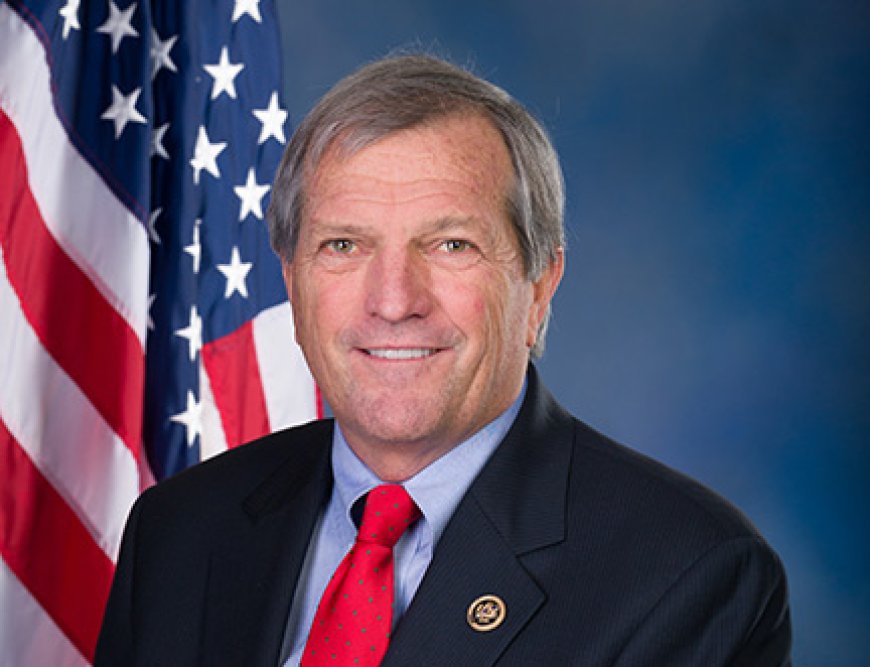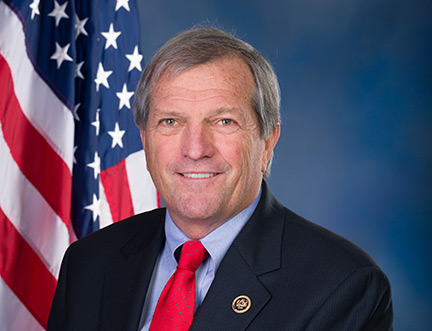Rep. DeSaulnier to Present Funding to Modernize Juvenile Justice in Contra Costa
Rep. DeSaulnier to Present Funding to Modernize Juvenile Justice ... Contra Costa News

Mark DeSaulnier to Provide Funding for Contra Costa County Probation Department’s Office of Reentry and Justice

Walnut Creek, CA – Congressman Mark DeSaulnier (CA-10) has announced his plan to present over a million dollars in funding to the Contra Costa County Probation Department’s Office of Reentry and Justice on Tuesday, August 1st at the Contra Costa County Board of Supervisors meeting.
This funding aims to connect local law enforcement with training programs that will enhance their ability to respond effectively to young adults, ultimately reducing the number of youth arrests. By investing in the development of law enforcement skills, this initiative aligns with the Sustainable Development Goal (SDG) 16: Peace, Justice, and Strong Institutions.
The funding for this project was made possible through the Consolidated Appropriations Act, 2023 (H.R. 2617), which included a total of $21.7 million in federal funding secured by Congressman DeSaulnier for 15 projects throughout Contra Costa County. These projects contribute to various SDGs, promoting sustainable development in the region.
Projects Supported by Congressman DeSaulnier’s Funding
Homelessness and High Cost of Living Projects:
- $1,431,222 for the Concord Shelter and Service Center Roofing Project: This project, led by Contra Costa Health Services, aims to replace the roof and skylights at a homeless shelter facility, ensuring safe and comfortable living conditions for program recipients.
- $3,500,000 for the Esperanza Place Phase 2 Project: Habitat for Humanity will utilize this funding to construct 19 affordable housing units near the Pleasant Hill BART station. The project also includes community spaces, play areas, bike lockers, and private yards for each unit.
Transportation and Infrastructure Projects:
- $2,500,000 for the Hydrogen Fueling Station Expansion Project: The Livermore Amador Valley Transit Authority will add a second hydrogen fueling tank, enabling them to fuel their entire fleet. This project contributes to SDG 7: Affordable and Clean Energy.
- $2,000,000 for the San Ramon Intelligent Transportation System and Citywide Communications Infrastructure Project: This initiative involves the construction of a publicly-owned, citywide fiber optic network. It will provide businesses, residences, and city facilities with access to high-speed internet and support the implementation of smart traffic signals and license plate reader cameras.
- $3,600,000 for the Ygnacio Valley Road Rehabilitation Project: The City of Walnut Creek will repave the roadway between Oak Grove Road and the city limits. Additionally, traffic safety improvements will be implemented to enhance overall traffic safety.
Public Safety Projects:
- $740,000 for the Antioch Gunshot Detection Technology Project: The Antioch Police Department will expand their gunshot detection technology by adding an additional five linear miles on freeways within their jurisdiction. This project aims to enhance public safety and combat gun violence.
- $198,000 for the Situational Awareness Cameras Project: The City of Dublin plans to increase community safety by installing situational awareness cameras near public parks and schools.
- $1,500,000 for the Public Safety Radio Replacement Project: The City of Walnut Creek will upgrade their radio equipment to improve communication between public safety jurisdictions in the East Bay during emergency response situations.
Environmental Projects:
- $3,500,000 for the Chain of Lakes PFAS Treatment Facility Project: The Zone 7 Water Agency will construct a treatment system to remove harmful PFAS chemicals from groundwater in the Tri-Valley region. This project contributes to SDG 6: Clean Water and Sanitation.
- $1,510,000 for the Enrico Cinquini Park Construction Project: Oakley will build a new park featuring a natural turf field, a covered picnic and barbecue area, restrooms, an enhanced playground, and a parking lot.
- $1,672,000 for the Marin Clean Energy Enabling Electrification Project: This funding will support income-qualified customers in installing electrification technologies in their homes, such as heat pump water heaters, heat pump HVAC systems, induction cooktops, battery storage systems, and electric vehicle chargers. This project aligns with SDG 7: Affordable and Clean Energy.
- $2,000,000 for the Sacramento-San Joaquin Delta One Water Initiative Knightsen Wetland Restoration Project: Contra Costa County will collaborate with the U.S. Army Corps of Engineers to restore the Knightsen Wetland habitat. This project contributes to SDG 15: Life on Land.
- $900,000 for the West Reach Creek Access Project: Lafayette aims to increase access to West Reach Creek by creating a new dirt path and restoring native wildlife habitat.
Education and Youth Services Projects:
- $450,000 for the Contra Costa Commercial and Sexual Exploitation of Children Navigators Capacity Building Initiative Project: The Seneca Family of Agencies will bridge systems gaps and enhance coordination among various entities to protect children from exploitation. This project aligns with SDG 16: Peace, Justice, and Strong Institutions.
- $5,000,000 for the Monument Corridor Head Start and Early Head Start Preschool Facility Project: The Spanish Speaking Unity Council of Alameda County will expand access to quality and affordable education by acquiring land and constructing a new facility.
SDGs, Targets, and Indicators
1. Which SDGs are addressed or connected to the issues highlighted in the article?
- SDG 4: Quality Education
- SDG 5: Gender Equality
- SDG 8: Decent Work and Economic Growth
- SDG 10: Reduced Inequalities
- SDG 11: Sustainable Cities and Communities
- SDG 16: Peace, Justice, and Strong Institutions
The issues highlighted in the article include funding for various projects related to homelessness, transportation, public safety, environment, and education. These issues are connected to the SDGs mentioned above.
2. What specific targets under those SDGs can be identified based on the article’s content?
- SDG 4.7: By 2030, ensure that all learners acquire the knowledge and skills needed to promote sustainable development, including among others through education for sustainable development and sustainable lifestyles.
- SDG 5.5: Ensure women’s full and effective participation and equal opportunities for leadership at all levels of decision-making in political, economic, and public life.
- SDG 8.5: By 2030, achieve full and productive employment and decent work for all women and men, including for young people and persons with disabilities, and equal pay for work of equal value.
- SDG 10.2: By 2030, empower and promote the social, economic, and political inclusion of all, irrespective of age, sex, disability, race, ethnicity, origin, religion, or economic or other status.
- SDG 11.1: By 2030, ensure access for all to adequate, safe and affordable housing and basic services and upgrade slums.
- SDG 16.3: Promote the rule of law at the national and international levels and ensure equal access to justice for all.
The specific targets mentioned above are relevant to the issues discussed in the article, such as promoting sustainable development through education, ensuring equal opportunities for women’s participation in decision-making, achieving full and productive employment, promoting social inclusion, providing adequate housing and basic services, and promoting the rule of law.
3. Are there any indicators mentioned or implied in the article that can be used to measure progress towards the identified targets?
- Indicator for SDG 4.7: Proportion of schools with a curriculum that addresses sustainable development.
- Indicator for SDG 5.5: Proportion of seats held by women in national parliaments and local governments.
- Indicator for SDG 8.5: Employment-to-population ratio by sex, age group, and persons with disabilities.
- Indicator for SDG 10.2: Proportion of people living below 50 percent of median income, by age, sex, and disability status.
- Indicator for SDG 11.1: Proportion of urban population living in slums, informal settlements, or inadequate housing.
- Indicator for SDG 16.3: Proportion of victims of violence in the previous 12 months who reported their victimization to competent authorities or other officially recognized mechanisms.
The indicators mentioned above can be used to measure progress towards the identified targets. These indicators provide specific metrics to assess the achievement of the targets, such as the proportion of schools with a curriculum on sustainable development, the proportion of women in decision-making positions, the employment-to-population ratio, the proportion of people living below a certain income threshold, the proportion of urban population living in inadequate housing, and the proportion of victims reporting violence.
SDGs, Targets, and Indicators
| SDGs | Targets | Indicators |
|---|---|---|
| SDG 4: Quality Education | 4.7: By 2030, ensure that all learners acquire the knowledge and skills needed to promote sustainable development, including among others through education for sustainable development and sustainable lifestyles. | Proportion of schools with a curriculum that addresses sustainable development. |
| SDG 5: Gender Equality | 5.5: Ensure women’s full and effective participation and equal opportunities for leadership at all levels of decision-making in political, economic, and public life. | Proportion of seats held by women in national parliaments and local governments. |
| SDG 8: Decent Work and Economic Growth | 8.5: By 2030, achieve full and productive employment and decent work for all women and men, including for young people and persons with disabilities, and equal pay for work of equal value. | Employment-to-population ratio by sex, age group, and persons with disabilities. |
| SDG 10: Reduced Inequalities | 10.2: By 2030, empower and promote the social, economic, and political inclusion of all, irrespective of age, sex, disability, race, ethnicity, origin, religion, or economic or other status. | Proportion of people living below 50 percent of median income, by age, sex, and disability status. |
| SDG 11: Sustainable Cities and Communities | 11.1: By 2030, ensure access for all to adequate, safe and affordable housing and basic services and upgrade slums. | Proportion of urban population living in slums, informal settlements, or inadequate housing. |
| SDG 16: Peace, Justice, and Strong Institutions | 16.3: Promote the rule of law at the national and international levels and ensure equal access to justice for all. | Proportion of victims of violence in the previous 12 months who reported their victimization to competent authorities or other officially recognized mechanisms. |
Behold! This splendid article springs forth from the wellspring of knowledge, shaped by a wondrous proprietary AI technology that delved into a vast ocean of data, illuminating the path towards the Sustainable Development Goals. Remember that all rights are reserved by SDG Investors LLC, empowering us to champion progress together.
Source: contracosta.news

Join us, as fellow seekers of change, on a transformative journey at https://sdgtalks.ai/welcome, where you can become a member and actively contribute to shaping a brighter future.







